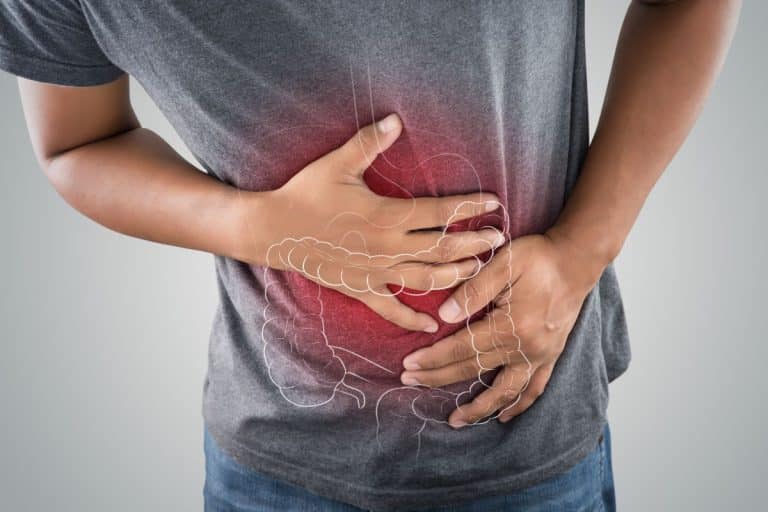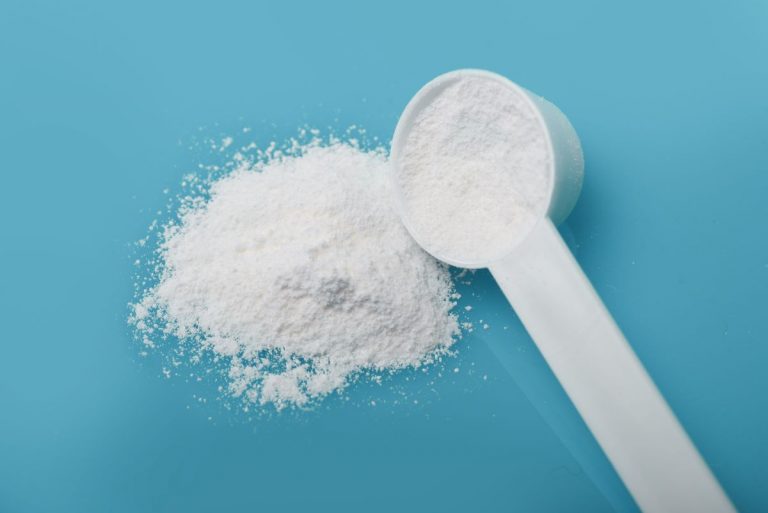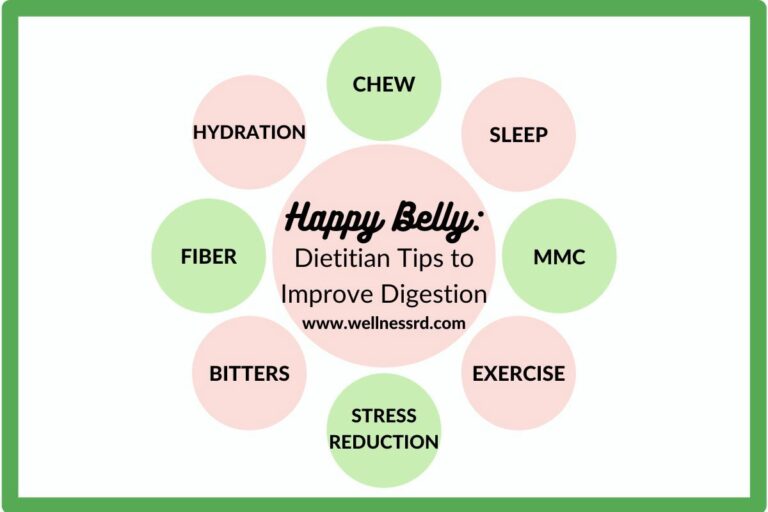Low FODMAP Diet Grocery List to Improve Gut Symptoms (PDF)
Are you following the Low FODMAP diet and having a challenging time navigating the grocery store?
Do you need a low FODMAP diet grocery list to shop for foods to improve your gut symptoms?
In this article, we will review the low FODMAP diet and low FODMAP diet benefits, and you can download a low FODMAP diet grocery list at the end of this post.
It is important to see a Registered Dietitian Nutritionist before you start a low FODMAP diet to ensure nutrition adequacy, tailor recommendations to your symptoms, and make other nutrition recommendations as needed.
This information is for educational purposes only. As with any medical advice, always check with your doctor or healthcare professional for personal and age-appropriate recommendations.
Let’s get started.
Want a copy of this article? Click here to download a copy of this article.
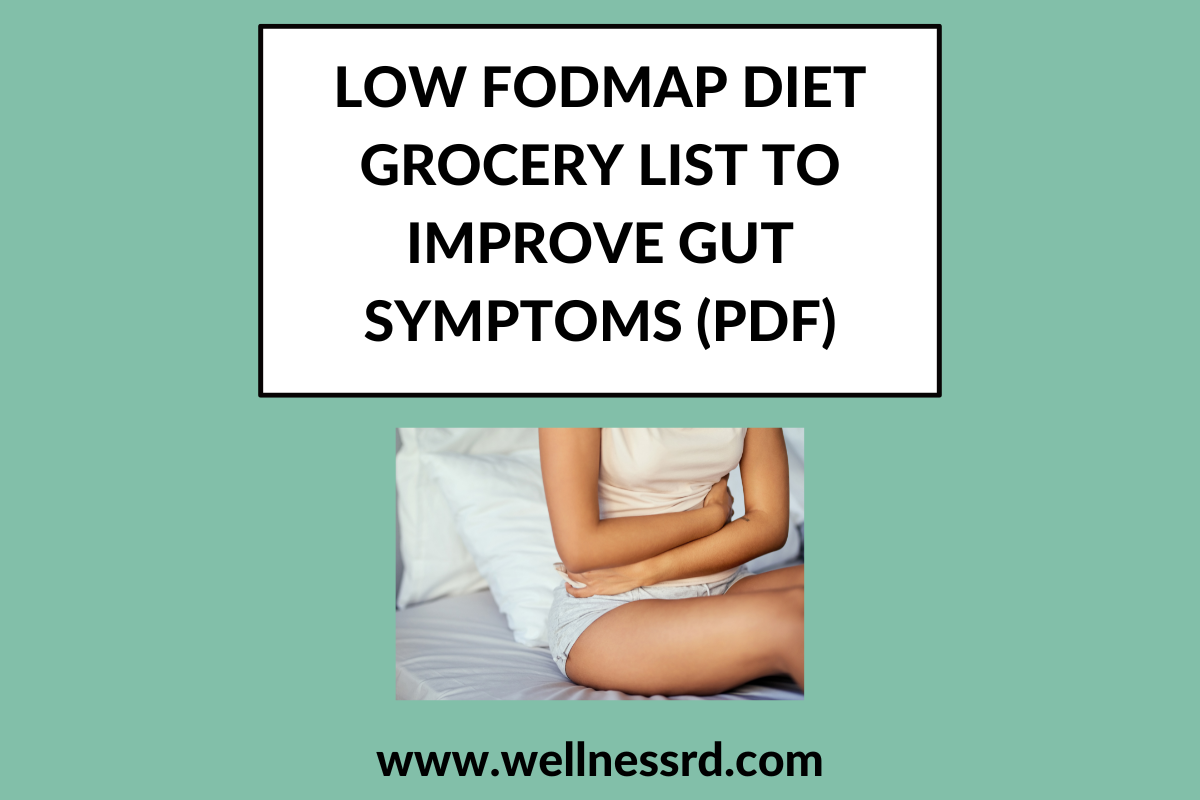
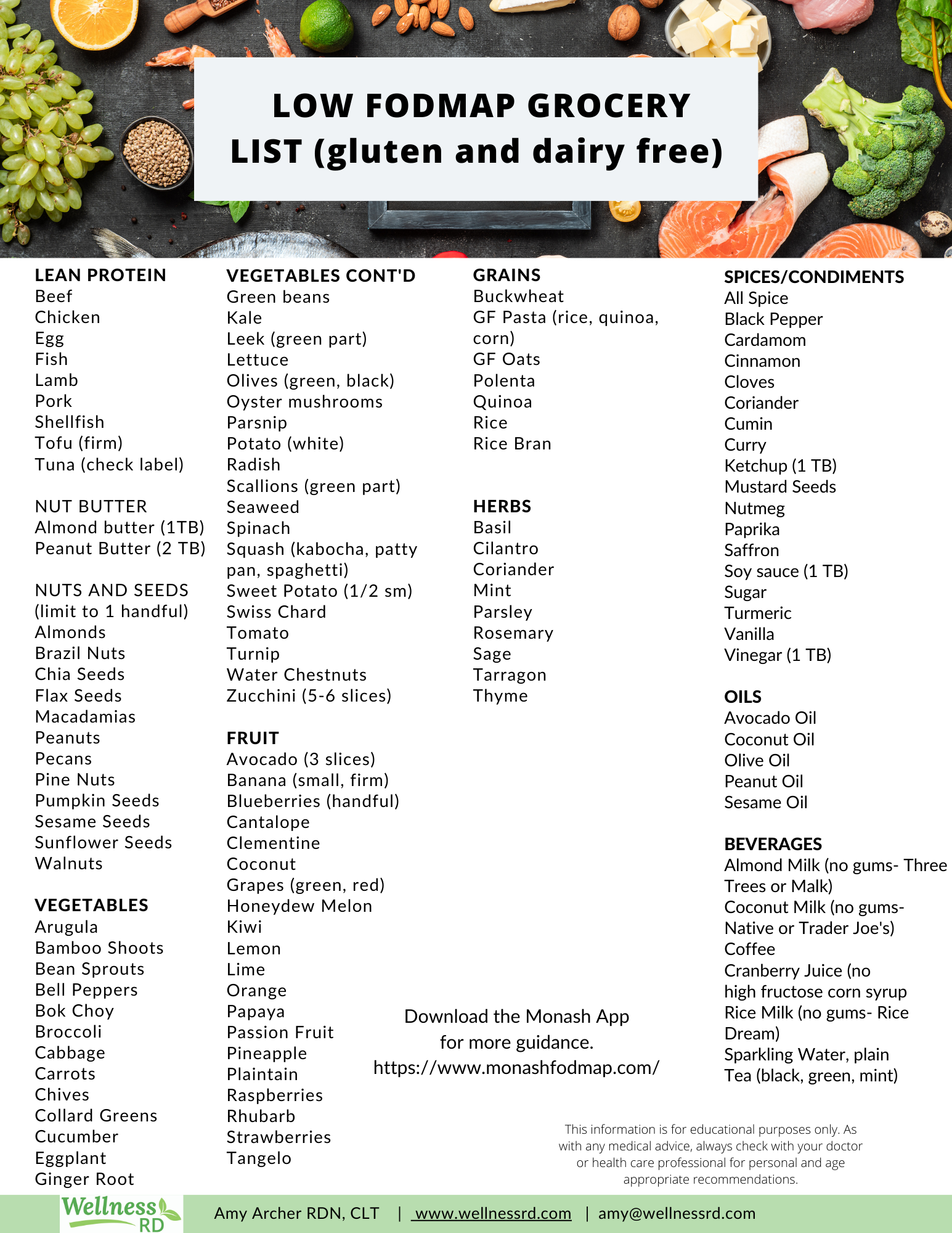
Table of Contents
What are FODMAPS?
FODMAPS are a group of carbohydrates that are not absorbed well by your gut. As these FODMAPS pass into the intestines, they are fermented by your gut bacteria and for sensitive people, intake of FODMAPS can cause gas, bloating, and diarrhea.
FODMAP stands for:
- Fermentable (fermentable foods that move through your gut and produce gas)
- Oligosaccharides (fructans and GOS found in wheat, onion, garlic, and beans)
- Disaccharides (lactose found in dairy)
- Monosaccharides (fructose in high fructose corn syrup, honey, and fruits)
- Polyols (sugar alcohols like sorbitol and mannitol used as artificial sweeteners)
What is the Low FODMAP Diet?
A low FODMAP diet limits high FODMAP foods. The low FODMAP is not an elimination diet but a nutrition plan where you substitute high FODMAP foods with alternative low FODMAP foods.
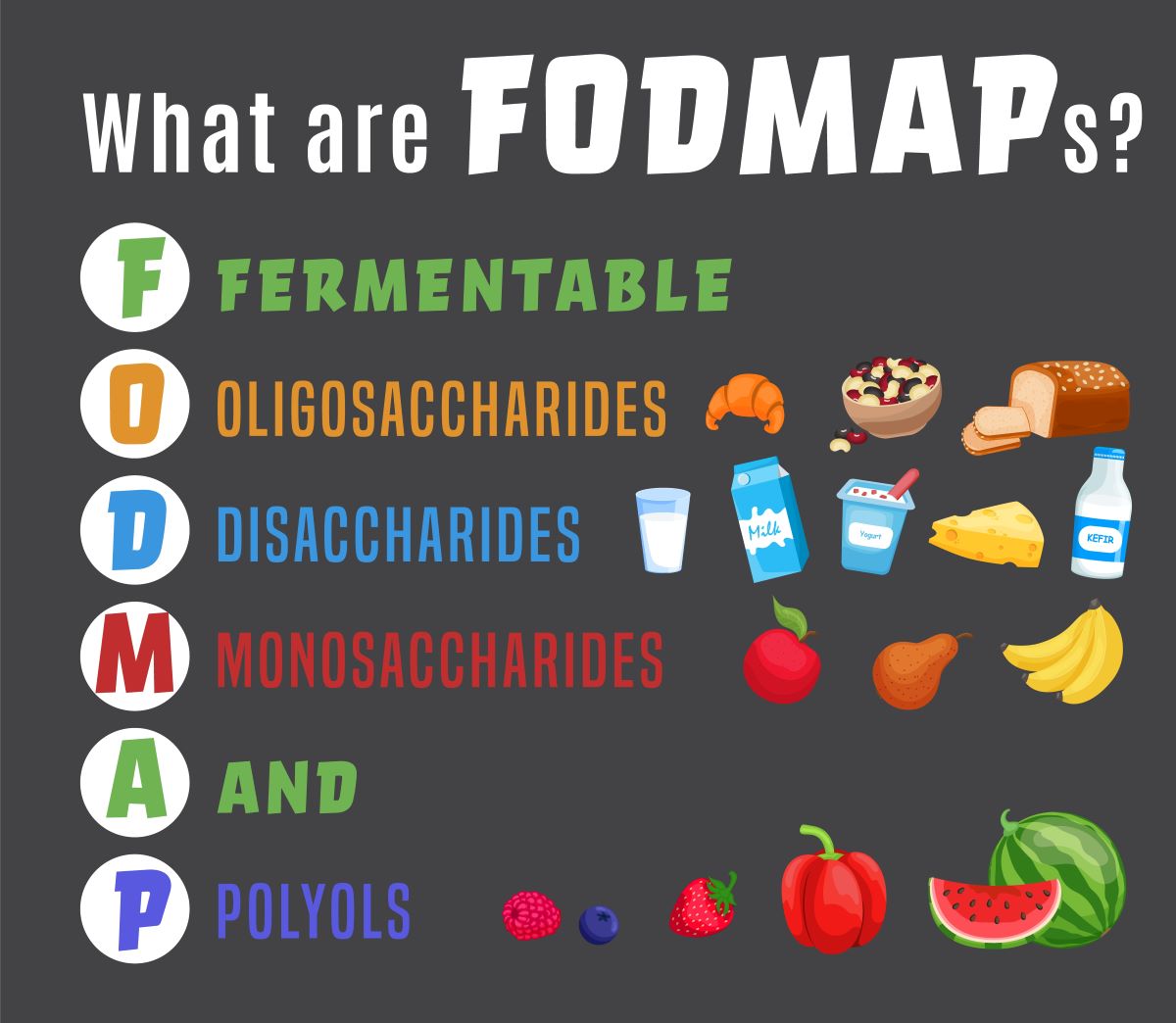
Benefits of a Low FODMAP Diet for Symptom Reduction
A low FODMAP may help reduce symptoms of IBS (1, 2, 3). According to a recent review of 10 studies, symptom reduction (bloating, gas, or diarrhea) is seen in about 50-80% of patients who follow a low FODMAP diet (4).

However, a low FODMAP diet may lead to changes in the gut microbiota due to reduced intake of prebiotic fibers. Further study is needed to assess these microbiota changes after a low FODMAP diet long term (5).
According to Monash University, a low FODMAP diet should be a short-term nutrition change (2-6 weeks) then, a challenge phase of food reintroduction, and personalization with FODMAPS is recommended to ensure nutritional adequacy (6, 7).
Overview of Foods High in FODMAPs
Some high FODMAP foods which may cause symptoms include:
- Wheat
- Regular dairy products
- Fruits like apples, pears, and peaches
- Vegetables like artichoke, asparagus, beets, brussels sprouts, cauliflower
- Some beans
- Pistachios, cashews
- Garlic, onion, shallots
The Importance of a Grocery List for a Low FODMAP Diet
Building your low FODMAP grocery list is important so you can choose the appropriate foods at the store for your nutrition plan.
FODMAP-friendly Fruits and Vegetables
- Cantaloupe
- Strawberries
- Carrots
- Lettuce
- Potato
Low FODMAP Protein Sources
- Lean meats
- Poultry
- Fish and seafood
- Eggs
Low FODMAP Grains
- Quinoa
- Rice
- Gluten-free oats
- Corn-based products
Dairy Alternatives
- Plant-based milk
- Dairy-free yogurt options
Fats and Oils
- Avocado oil
- Coconut oil
- Olive oil
Low FODMAP Snacks
- Some nuts, nut butter, and seeds (in moderation)
- Popcorn
- Dark chocolate
Smart Shopping Tips for Low FODMAP Foods
- Bring your shopping list to the store so you can choose low-FODMAP foods.
- Make sure you read food labels for FODMAP foods.
- You can also check the MONASH website or app to check for low-FODMAP foods.
When following a low FODMAP nutrition plan, it is important to plan meals and snacks so you can stick to your nutrition plan.
Low FODMAP Diet Not Working?
If you find a low FODMAP diet does not relieve your gut symptoms, you may try a gut healing protocol with a registered dietitian nutritionist or food sensitivity testing which can be a guide for a personalized anti-inflammatory nutrition plan.
The Mediator Release Test (MRT) is the best food sensitivity test available as it measures the amount of mediators released from your white blood cells when exposed to food antigens and food chemicals. The MRT test can identify which foods or food chemicals show an inflammatory response in your body. From the MRT test, a LEAP protocol is introduced based on your results.
Additional Tips for Managing IBS Symptoms
- Eat three meals spread throughout the day. Give your gut time to rest.
- Chew thoroughly and eat slowly.
- Practice mindfulness and relaxation.
- Meet with a Registered Dietitian Nutritionist for guidance and supplement recommendations.
You can download a gluten-free, dairy-free low FODMAP grocery list here.
Final Thoughts
FODMAPS are a group of carbohydrates that are not absorbed well by your gut.
A low FODMAP diet may help reduce symptoms of IBS.
A low FODMAP diet should be a short-term nutrition change.
If you find a low FODMAP diet does not relieve your gut symptoms, you may try a gut healing protocol or testing with a registered dietitian.
Test don’t guess.
Contact me to schedule an appointment to review your personalized nutritional health.
© Amy Archer RDN, CLT, CHWC



